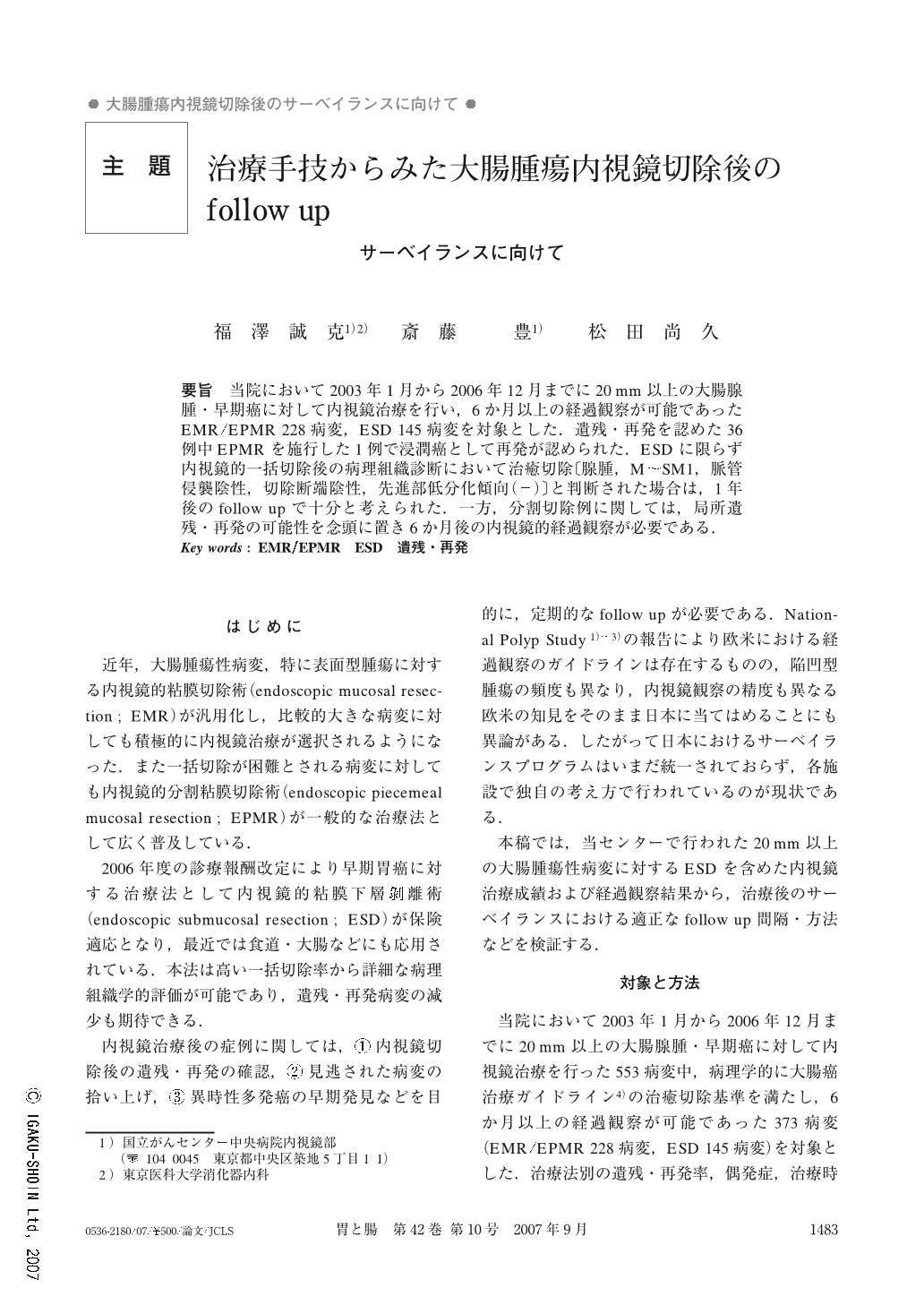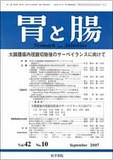Japanese
English
- 有料閲覧
- Abstract 文献概要
- 1ページ目 Look Inside
- 参考文献 Reference
要旨 当院において2003年1月から2006年12月までに20 mm以上の大腸腺腫・早期癌に対して内視鏡治療を行い,6か月以上の経過観察が可能であったEMR/EPMR 228病変,ESD 145病変を対象とした.遺残・再発を認めた36例中EPMRを施行した1例で浸潤癌として再発が認められた.ESDに限らず内視鏡的一括切除後の病理組織診断において治癒切除〔腺腫,M~SM1,脈管侵襲陰性,切除断端陰性,先進部低分化傾向(-)〕と判断された場合は,1年後のfollow upで十分と考えられた.一方,分割切除例に関しては,局所遺残・再発の可能性を念頭に置き6か月後の内視鏡的経過観察が必要である.
From January 2003 to December 2006, A total of 228 lesions (≧20mm) were treated by EMR or EPMR, and another 145 lesions underwent ESD in our hospital. All cases were followed up for more than six months. Recurrence as invasive cancer was identified in one EPMR patient treated among the 36 cases in which residual tumor or recurrence was detected in the EMR/EPMR group. Residual tumor or recurrence was detected within six months in 83% (30/36) of these cases which suggests that an appropriate time interval for the initial examination after fractional resection is three to six months. In the ESD group, no residual tumor or recurrence was detected in any lesion that was treated by en-bloc resection. This suggests that when an ESD is considered to be a curative resection (adenoma, M-SM1, no vascular infiltration, negative resection margin and poor differentiation at the invasive front), an initial follow-up examination one year after ESD should be adequate. However, if piecemeal resection was performed, follow up examination should be performed not only by colonoscopy but also by CT and Tumor markers.

Copyright © 2007, Igaku-Shoin Ltd. All rights reserved.


